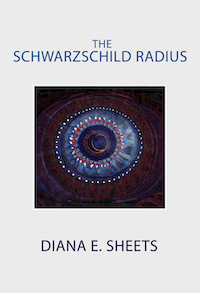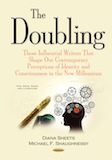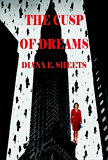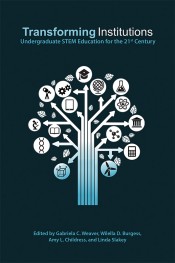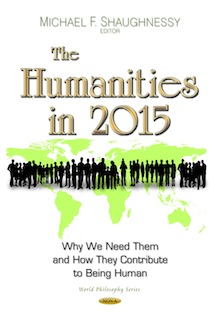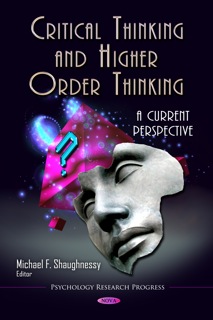What the Publishers Won't Admit About the Demise of the Great American Novel
Copyright © 2008 by Diana E. Sheets
Want to read a contemporary American novel written in the tradition of For Whom the Bell Tolls or Absalom, Absalom! or The Adventures of Augie March or
Certainly the report “Reading at Risk” (2004) and its sequel “To Read or Not to Read” (2007) published by the National Endowment for the Arts are distressing. Analysis based on census information dating back to 1982 presents a dismal picture. In 1982, only 56.9% of Americans had read a work of creative literature in the past year. By 1992 it had fallen to 54% and dropped to 46.7% by 2002. Estimates provided by the Book Industry Study Group suggest that sales of books per person had decreased from 8.27 books per person in 2001 to 7.93 in 2006. Meanwhile, the Department of Labor figures indicate that in American households spending on reading had declined from $163 dollars in 1995 to $126 in 2005, a near 20-year low, despite the rising costs of books. These trends prompted Caleb Crain last December to characterize our era as “Twilight of the Books” in an article that appeared in The New Yorker. (December 24 & 31, 2007, pp. 134-139)
But are the declines in reading and purchasing of books simply to be blamed on the reader? What about the publishers? Don’t they bear some responsibility?
Over the past quarter century, publishing has become a global enterprise. The concentration of American houses in two German multi-holding companies prompted William Safire to denounce this “unilateral cultural imperialism by literary tycoons in the Fatherland” in his Opinion column in the The New York Times in 2002, noting that “Bertelsmann owns Random House, which means Alfred Knopf, Anchor, Ballantine, Crown, Doubleday, Bantam, Dell, Dial, Fawcett, and the combined Book of the Month Club and Literary Guild. The Von Holzbrinck Group owns Farrar, Straus; Henry Holt (including half of Times Books); and
This concentration of American publishers in the hands of a few global companies is dramatically shown when we examine the top five trade publishers in the
(www.michaelhyatt.com/fromwhereisit/2006/12/the_top_ten_pub.html Consult for the rankings.)
And it is not just the trade publishers who are “in play.” In 2006 Houghton Mifflin was purchased by a newly formed Irish public limited company. After the acquisition, the company was renamed Houghton Mifflin Riverdeep Group PLC. By the end of 2007, it had also acquired Harcourt and Greenwood-Heinemann, extending its influence as one of the largest textbook publishers in the U.S while maintaining key trade imprints, notably, Houghton Mifflin and Harcourt. By comparison, Grove/Atlantic, Inc, a trade publisher that owns Grove Press and Atlantic Monthly Press, seems positively quaint compared with its towering competitors.
Thus, we discover that all of the top five trade publishers in the
This outcome was eerily prophesized by the screenwriter Paddy Chayefsky in the film Network (1976). Arthur Jensen, President and Chairman of the Board of the Communications Corporation of
You have meddled with the primal forces of nature, Mr. Beale, and I won’t have it, is that clear? You think you have merely stopped a business deal—that is not the case! The Arabs have taken billions of dollars out of this country, and now they must put it back. It is ebb and flow, tidal gravity, it is ecological balance! You are an old man who thinks in terms of nations and peoples. There are no nations! There are no peoples! . . . . There is only one holistic system of systems, one vast and immane, interwoven, interacting, multi-variate, multinational dominion of dollars! Petro-dollars, electro-dollars, multi-dollars! Reichmarks, rubles, rin, pounds and shekels! It is the international system of currency that determines the totality of life on this planet! That is the natural order of things today! That is the atomic, subatomic and galactic structure of things today! And you have meddled with the primal forces of nature and you will atone! Am I getting through to you, Mr. Beale?
(http://sfy.ru/sfy.html?script=network or consult the novelized rendering of Paddy Chayefsky’s script Network written by Sam Hendrin, A Kangaroo Book, published by Pocket Books, 2nd Edition, 1977, pp. 130-131)
Beale, convinced that God has spoken, asks why he has been selected to deliver this message to the minions. Jensen replies, “Because you’re on television, dummy. Sixty million people watch you every night of the week, Monday through Friday.” (Network, p. 132)
And so it is with publishing. The conglomerates are calculating with their spreadsheets the global cost/return/ratio anticipated for every book they will represent. Profit is paramount, American exceptionalism of little consequence. And the outcome? As with the other genres, literary fiction, these days, must be formulaic. Innovation has been replaced almost entirely with feminized “virtue” or sanctimonious multiculturalism devoid of truth or excellence. As a consequence, literary fiction has become entirely derivative and resistant to telling our story. Given this “literary tofu” that is bloodless and devoid of American realism, the reader loses interest. In desperation, publishers have substituted a steady diet of sensationalized “pulp” in their attempts to boost sales. After years of tabloid fiction and celebrity memoirs, the reader has lost the inclination and the palette to recognize, let alone savor, an innovative story. HOW, UNDER THESE CIRCUMSTANCES, CAN THE GREAT AMERICAN NOVEL BE PUBLISHED? The outcome is the natural consequence of the decision of publishers over the last quarter century to have quarterly profits dictate the selection of fiction.
What, then, are the consequences of the commoditization of prose? The publishing conglomerates determine what will be read not only in books but also in newspapers and magazines. Take, for example, The New York Times. Its Sunday magazine now publishes weekly excerpts from commercial novels and comic books—the latter of which the literati today insist on referring to as graphic novels. Are these based on high-minded principles? Certainly not. The selections are determined by what will sell with the overwhelming emphasis on authors whose fiction has been primed for the global market. How is it that reputedly our most literary newspaper is now regularly including glorified pulp in its Sunday magazine? Why are the Sunday Style Section and the Sunday Magazine devoting weekly columns, respectively, to “Modern Love” and “Lives,” confessional tales of personal woe featuring authors who are the casualties of maligned relationships and, frequently, the instigators of their own troubled lives in order to promote their disreputable memoirs and formulaic novels? Why do the columns read each week as if it were written by the same person, regardless of gender and topic? How is it that The New York Times has become an enabler of Trash Memoir and Trash Fiction? (Answer: $$$.) Readers these days are enticed with subjective claims of “virtue” in order to sell “merchandise.” Aesthetic or ethical values no longer have currency. What matters is emotional desire—that “buy” impulse—coupled with strategic brand placement designed to incite sales. The reader as foil is the intended target and, by all appearances, the strategy is effective.
With the triumph of postmodernism that is our moment, no one considers it an outrage that these weekly columns are appearing in what was once the finest newspaper in the country. As a society, we no longer consider what is worthy. Consequently, there are no experts adjudicating literature who are informed by lofty standards of truth and excellence. Nor are there aspirational readers hungering for this wisdom. What matters today is, “Does it sell?” The Sunday New York Times Magazine regularly interviews celebrities wearing designer clothing annotated with price tags. Why shouldn’t commercial novels, comics, and lying memoirs be included? Doesn’t the weekly appearance of Rob Walker’s column, “Consumed,” in The New York Times Magazine say it all? What’s wrong with packaging and codifying everything as products for purchase? Why not permit the reader to judge for him or herself the hidden costs associated with imbedding products? Except, perhaps, when the standards of selection have declined so drastically that the outcome may best be characterized as fraud.
And The New York Times is not alone. Let us consider two "memoirs" published recently that present our “American” story. Perhaps readers recall when Nan A. Talese/Doubleday, the imprint owned by Random House, successfully pitched James Frey’s A Million Little Pieces (2003) as a selection for Oprah’s Book Club. The plot was ideal. Writer loses his way, becomes an alcohol and crack addict, and is redeemed. It includes drugs, degradation, dead bodies, a mafia boss, and a love story gone awry. Smut and titillation with the whiff of post-hoc “virtue.” What could be better? The rollout proceeds as planned. The book selection is featured on Oprah’s website. Then, the scandal breaks. The online magazine The Smoking Gun uncovers the fraud and headlines its story, “A Million Little Lies.” Turns out, James Frey’s memoir was initially pitched as a novel, not memoir. Many discrepancies belie its authenticity. There’s the train-automobile collision in which Frey has disingenuously inserted himself into the drama as a central character connected with one of the young women who died. There’s the exaggerated criminal record that doesn’t square with the evidence. And so many other discrepancies. But since memoir sells, not fiction, the book is pitched as truth. At first, Oprah defends her selection. When the scandal gains momentum, she denounces James Frey and Nan Talese on her televised program. However, here’s the rub. Author and editor (Sean McDonald), as well as past and present publishers—Nan A. Talese/Doubleday/Random House/Bertelsmann and Riverhead/Penguin Group (USA), respectively—have profited enormously from the scandal. Nothing like fraud to boost revenue. According to The Smoking Gun, the book’s sequel, My Friend Leonard earned Frey millions, enabling him to buy a luxury
(http://www.thesmokinggun.com/jamesfrey/0104061jamesfrey1.html)
Not convinced? How about Judith Regan’s deal with O.J. Simpson in 2006 to publish his “hypothetical” account of how he might have killed his wife and Ronald Goldman that fateful night. Entitled If I Did It, the book deal was reputedly negotiated for a whopping $3.5 million. It was to be published under Regan’s imprint at HarperCollins. The book release and television interview were eventually cancelled but not before Fox Corporation, owned by Murdock’s News Corporation, approached the Goldman and Brown families with a profit-sharing program that would have been worth millions had they accepted. They refused. Shortly thereafter, Regan was fired from HarperCollins, allegedly for anti-Semitic slurs. The cancelled book appeared surreptitiously online. In August of 2007, a bankruptcy court granted the Goldman family rights to Simpson’s book in order to recover money for an unpaid civil judgment. The book was reissued under the title If I Did It: Confessions of the Killer. It included comments by ghostwriter Pablo Fenjves and journalist Dominick Dunne. The Brown family opposed the publication of the book. The very day it was released Simpson and a group of men entered a hotel room in
http://en.wikipedia.org/wiki/O._J._Simpson_Las_Vegas_robbery_case, http://en.wikipedia.org/wiki/Judith_Regan)
Are these the only American stories available to publishers today? If books were judged based on ethical standards of quality and content, could publishers be implicated for fraud? Celebrity autobiographies, lying memoirs, and trashy publications of all stripes have, for more than a generation now, been sold to the buyer as bona fide literature. If these books had been cars, they would have been recalled. But because there are no acceptable standards in publishing, the industry has not been made accountable. If faced with lawsuits, retractions are made and legal funds are established to be dispersed as needed. All the while, the presses keep running and the profits continue. This violation of ethical principles has occurred on so many occasions that readers no longer have expectations of truth or excellence. Trashy tales, celebrity biographies, and lying memoirs are the norm. What other industry could so brazenly engage in fraud? Publishers have defamed books in their greed to meet the exigencies of the bottom line. Fifty years ago, who would have believed they could sink so low. And we have the audacity to wonder why readership has declined?


